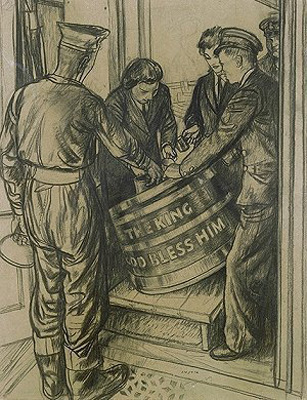Sodium is poisonous and so is chlorine, but if you put them together, they become sodium chloride, or salt, a substance both beneficial and desirable to humans and animals. Chemistry is amazing!
Thomas Jefferson wrote about wanting to see “chemistry applied to domestic objects...making cider, to fermentation and distillation generally, to the making of bread, butter, cheese, soap to the incubation of eggs...”
 In 2005, author Tom Standage penned the book A History of the World in 6 Glasses. He writes about 6 beverages that he thinks have shaped the world from early times to the present. The book is a fascinating examination of the creation of beer, wine, spirits, coffee, tea and coca-cola and how they have affected peoples’ relationships as well as their productivity.
In 2005, author Tom Standage penned the book A History of the World in 6 Glasses. He writes about 6 beverages that he thinks have shaped the world from early times to the present. The book is a fascinating examination of the creation of beer, wine, spirits, coffee, tea and coca-cola and how they have affected peoples’ relationships as well as their productivity.When early humans first began to stop their nomadic lifestyle between 10,000 and 15,000 years ago and settled down to farm, grain was among the first crops. Sumerians may have discovered the fermentation process when the wet grain produced an inebriating pulp. Fermentation is the chemical conversion of glucose found in the grain into ethyl alcohol. With the use of yeast, mold, or other enzymes the process became more elaborate and beer was the result. In Ancient Egypt, the workers that built the pyramids were probably paid with jugs of beer.
Paleolithic humans may have discovered wine when they sampled naturally fermenting wild grapes. Early use of wine was associated with religious activities. Areas like Greece and Rome where people cultivated grapes became the center for the production of the sought after drink.
 Spirits or hard liquor which developed later was given to sailors during long sea voyages in the 15th, 16th and 17th centuries. Great Britain mandated the drinking of grog made with rum, water and lemon or lime juice. The concoction actually reduced illness and scurvy. The policy may have been partly responsible for Britain’s superiority on the sea.
Spirits or hard liquor which developed later was given to sailors during long sea voyages in the 15th, 16th and 17th centuries. Great Britain mandated the drinking of grog made with rum, water and lemon or lime juice. The concoction actually reduced illness and scurvy. The policy may have been partly responsible for Britain’s superiority on the sea.On the Arabian Peninsula, roasted beans were first brewed and made into coffee which later spread throughout the Arab world. Coffeehouses took the place of taverns because Islam banned alcohol but allowed the stimulating drink of coffee. The famous Lloyds of London and the London Stock Exchange were both originally coffeehouses.
Although the drinking of tea started around the third century A.D., it quickly flourished as a caffeinated afternoon pick-me-up in the industrial world. The beneficial aspect that it was brewed with water purified by boiling added to its use in highly populated areas.
Pharmacist John Stith Pemberton created Coca-Cola in 1886, and today though somewhat different from the original, it stands as a symbol of America as an economic superpower around the world.
The chemical reactions required to make these six beverages have in some ways shaped the world. On June 7 Port Discover will focus on the Science of Beer during its fundraiser, “Summer Brew-Balloo.” Check the website, www.portdiscover.org for more information and for tickets.
No comments:
Post a Comment